 |
||||
Managing the Impact of Multiple Stressors in Saginaw Bay
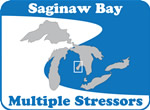
Craig Stow,
Stephen B. Brandt,
Tom Croley,
Juli Dyble,
Gary Fahnenstiel,
Tom Nalepa,
Steve Pothoven,
Henry Vanderploeg (GLERL)
Tomas Hook, Dima Beletsky, Carlo DeMarchi, Tom Johengen, Donna Kashian
(University of Michigan)
Scott Peacor, Michael Kaplowitz, Frank Lupi (Michigan State University)
Peter Lavrentyev (University of Akron)
Joe DePinto (Limno-Tech)
Chansheng He (Western Michigan University)
Tammy Newcomb (Michigan Department of Natural Resources)
Jim Bredin (Michigan Department of Environmental Quality)
Funding Agency: NOAA Center for Sponsored Coastal Research (http://www.cop.noaa.gov)
Project Updates | Information for Project Investigators | News
Multiple Stressors in Saginaw Bay: Navigating the Issues
April 2, 2008
Bay City, Michigan.
Hosted by the Great Lakes Environmental Research Laboratory
More information contact:
Workshop for managers and agency representatives
Introduction
The NOAA Great Lakes Environmental Research Laboratory, in conjunction with several partner agencies and institutions, is just beginning a 5 year project to study the effects of multiple stressors on Saginaw Bay in Lake Huron. Like many coastal areas around the world, Saginaw Bay has been subjected to numerous stressors originating from human activities. These stressors have included toxic contaminants, nutrients, sediments, overfishing, exotic species, and more recently - declining water levels.
The combined effect of these stressors has comprised the health of Saginaw Bay and resulted in the loss of many ecosystem features and services that people value.

Objectives
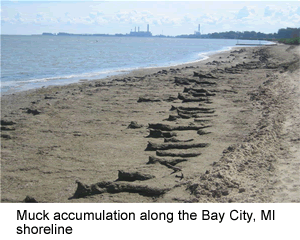
The goal of this project is to help identify management actions that will improve the health of the Bay and restore the ecosystem services that are important to the population of that area.
To accomplish this goal we will conduct research in the field and the laboratory to study how these stressors interact to influence Saginaw Bay's fisheries and water quality. The information from these studies will be used to guide the development of several mathematical models that will help identify useful management options.
Mathematical models will help researchers to organize what is known about the behavior of stressors in Saginaw Bay and to identify the important processes about which very little is known. Additionally, the models will allow scientists to conduct simulated experiments, such as reducing phosphorus input to the Bay, to evaluate the logical outcome alternative management actions.

Another objective is the development of an "Adaptive Integrative Framework" so that our models and field studies will be used interactively to inform one another. As an important component of this Adaptive Integrative Framework, our research will be conducted in coordination with local stakeholder groups under the guidance of representatives from the Michigan Departments of Natural Resources (DNR) and Environmental Quality (DEQ). This interactive environment will help the public understand the goals and difficulties involved in effectively studying and managing Saginaw Bay. In turn our research will be informed and guided by local knowledge and an enhanced appreciation of the ecosystem services that the public considers most important.
Water Levels
Water levels in Lakes Michigan and Huron began a rapid decline in the late 1990s. A statistical analysis of water level data that corrects for the effect of precipitation suggests that an underlying decline began much earlier, perhaps in the mid-1970s. The reason for this decline is unclear, but may be related to increased evaporation in the watershed, a possible consequence of global climate change. Declining water levels have made Saginaw Bay shallower which may be increasing the influence of the invasive zebra and quagga mussels on water quality.
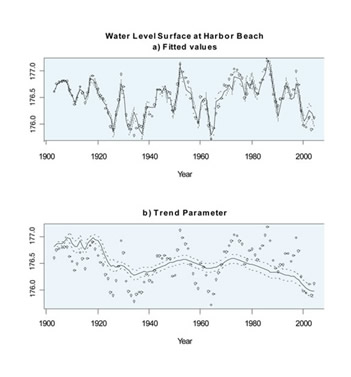
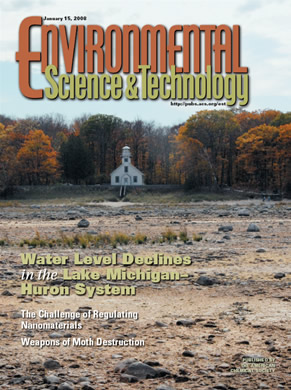
Citation: Sellinger, C.E., C.A. Stow, E C. Lamon, and S.S. Qian. 2008.
Recent Water Level Declines in the Lake Michigan-Huron System.
Environmental Science & Technology, 42: 367-373.
Phosphorus
Phosphorus is a nutrient that causes algae to grow. While it is essential to have some phosphorus in the water, too much can stimulate the growth of nuisance and toxic algae. Even though the Great Lakes Water Quality Agreement established a target phosphorus load for Saginaw Bay in 1978, inputs of this important nutrient continue to cause problems. Limited monitoring in the Bay makes it unclear if the target phosphorus loads are currently being met.

Total phosphorus data by year. Boxes show upper and lower data quartiles; the central solid line represents the median. Whiskers represent 1.5 times the interquartile range up to the max and min data values.
Invasive Species
Many invasive species have entered the Great Lakes in recent years. Zebra and quagga mussels have been especially important because they filter large quantities of water, removing sediments and contaminants from the water column. As a result the water has generally become clearer since these mussels invaded. However, the bad news is that because the water is clearer, more sunlight reaches the bottom of the shallow Bay causing nuisance algae to grow. These algae accumulate in the shallow areas along the shoreline and decay, resulting in a very unpleasant "muck". Lower water levels make the problem worse by exposing more shoreline. In addition, during the filtration process, some of the toxic or harmful species of algae (cyanobacteria, aka "blue-green algae") are preferentially returned to the water which may promote blooms of these harmful species.
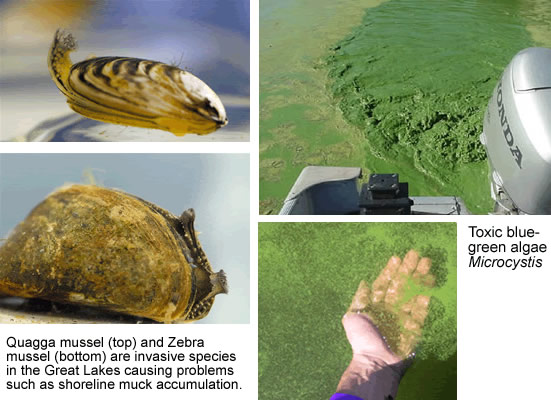
Fishery Impacts
To understand the impacts of multiple stressors on Saginaw Bay’s upper trophic levels, we will focus on yellow perch and walleye. These two species presently and historically constitute the most important fisheries in Saginaw Bay. The feeding ecology of these two species varies ontogenetically: progressing from zooplanktivory to primarily benthivory (yellow perch) and piscivory (walleye). In addition, they can be characterized as cool water species that do not thrive in warm, highly eutrophied waters or cold, oligotrophic waters. The sustained production of these two species likely requires striking a balance between excessive eutrophication vs. oligotrophication and sufficient pelagic vs. benthic prey bases. Thereby, the productivity of these two species represents a useful endpoint for evaluating the interacting effects of multiple stressors (e.g., climate change, invasive species) and the appropriate balance between sufficient and insufficient nutrient loading.

For additional information see:
Fielder, D.G. and Thomas, M.V. 2006. Fish population dynamics of Saginaw Bay, Lake Huron,
1998-2004. Michigan Department of Natural Resources, Fisheries Research Report. Ann Arbor.

